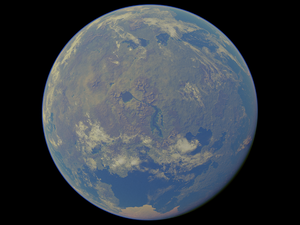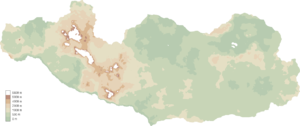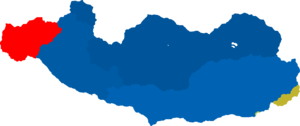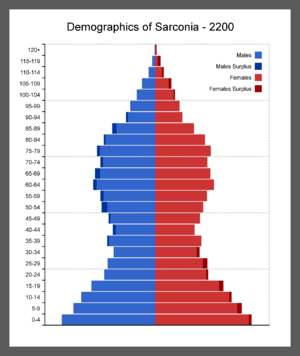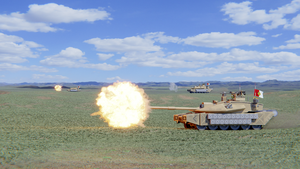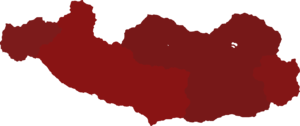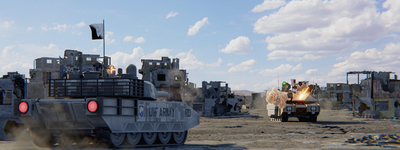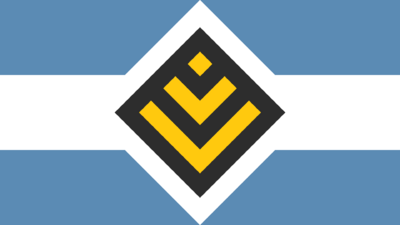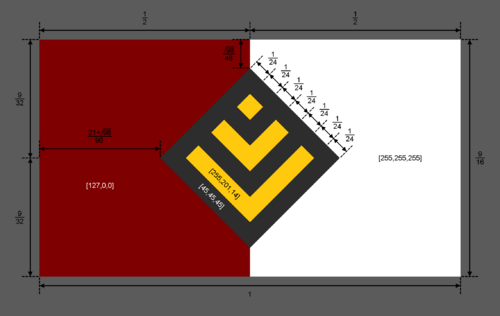Sarconia
|
Combined Provinces of Sarconia
Sarcon
|
|||||
|---|---|---|---|---|---|
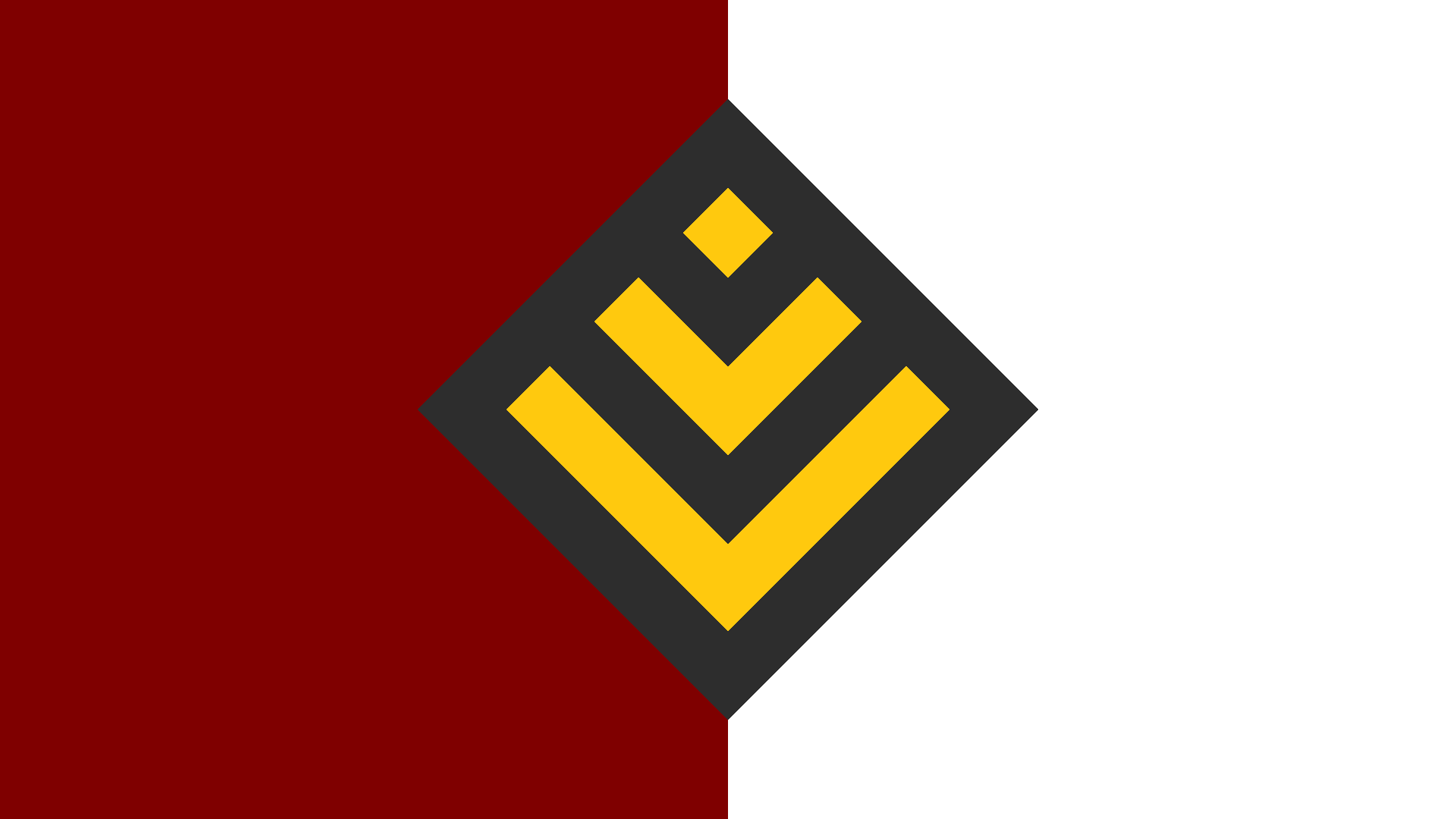 |
|||||
| Motto | "Sarcon ud Netuaar" (Sarconia Endures) |
||||
| Common Name | Sarconia | ||||
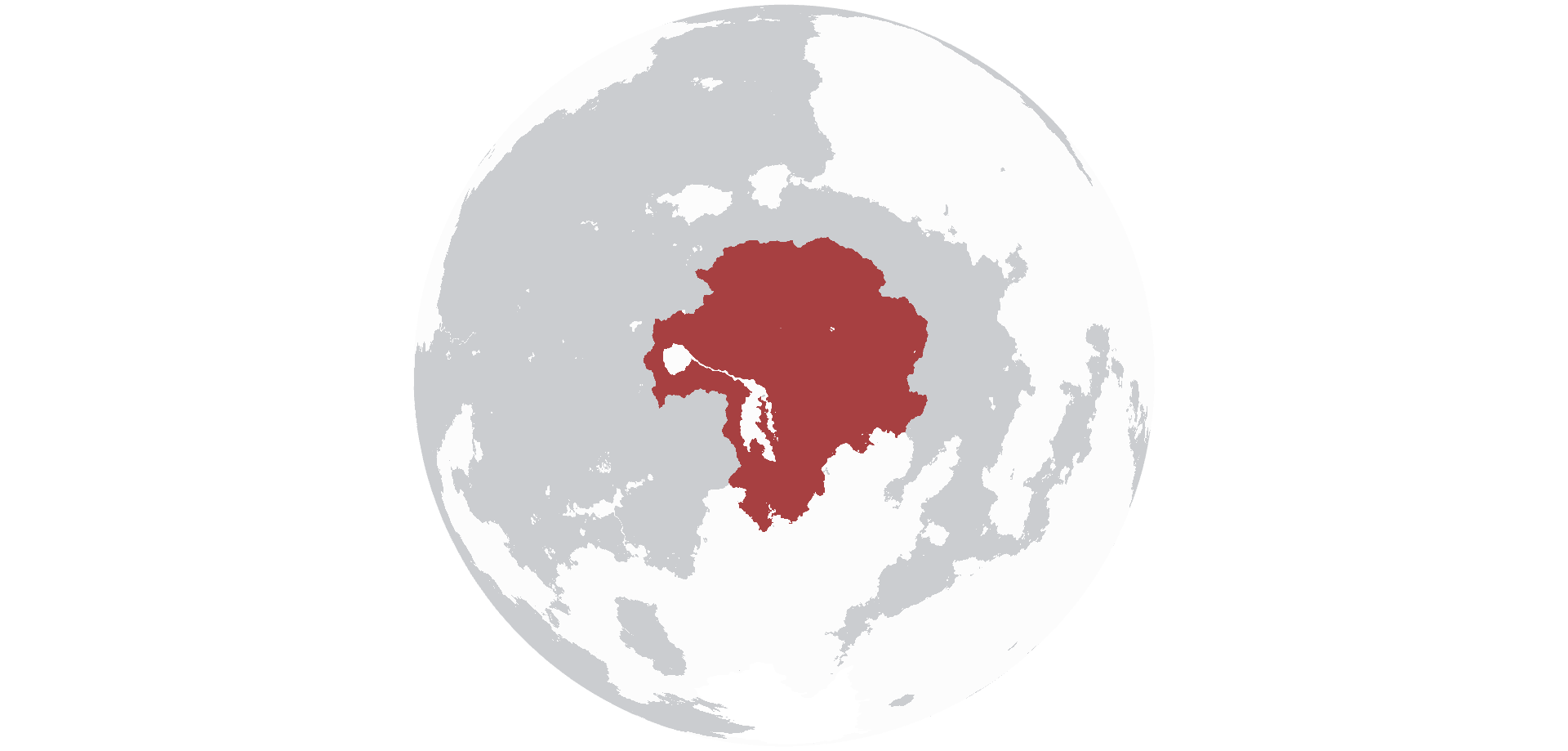 |
|||||
| Sarconian territories in 2200 | |||||
| Demonym | Sarconian | ||||
| Official languages | Sarconian, Zeouli, Tavan | ||||
| Currency | Aurid | ||||
| Politics | |||||
| Capital | Aerfel | ||||
| Government | Davedhrienist one-party federation | ||||
| Foundation | 2153 (Post-Dorvic breakup) 2115 (Zeoul and southern provinces reintegration) 2109 (Northern reunification) 2062 (Aquarian Protectorate) |
||||
| Preceded by | Doren | ||||
| Demography | |||||
| Ethnicities | 66% Dorvic 27% Zeouli 7% Other |
||||
| Population | 34,499,863 | ||||
| Area | 80,089 km² | ||||
Sarconia (Sarconian: Sarcon [sarkoʊniæ]), formally the Combined Provinces of Sarconia or the CPS, is a nation in Doren. It is bordered by Pippakistan to the north, Hermia to the east and the various provinces, tribes and city states of Central Doren to the northeast and west. Its capital and most populous city is Aerfel.
The history of modern Sarconia begins as a satellite state of communist Arcadia. After Arcadia's collapse in 1984, Sarconia reverted to a land of nomadic tribes and city states. The nation as it is today was split in half in 2050, when the southern provinces of Dziak, Calyx, Ahcurt, Amerb, Anidem and Arrataxt Island elected to create the Aquarian Union with Zeoul. Its northern territory would then be assimilated into the Red Horde in 2060, only to be inducted as a protectorate of Aquaria in 2066 following its dissolution. A period of hyperinflation caused the fragile undeveloped regions of Sarconia to fall into near anarchy, freeing itself of Aquarian influence.
Political and paramilitary actors in Sarconia would go on to unite the Combined Provinces of Doren over the 2070s, only for the superstate to be destroyed in the Second Continental War. The conflict saw Sarconia ravaged by orbital bombardment in the Shattering and outbreaks of mass famine immediately following.
The nation then became the focus of the Second Sarconian Counterinsurgency from 2085-2089. Sarconia nevertheless recovered to overcome the Republic of Aquaria in 2115 and reintegrate its linguistically Sarconian northern provinces. This was followed by a short period of open warfare with Zeoul before its surrender, after which it was brought under the control of the country as a special administrative region.
| “ | Through hellfire and famine, Sarconia endures. | ” |
| —Davedhrien Kerman, in a prerecorded radio speech, 2086 | ||
Coupled with the collapse of the Owlian Union, the shifting balance of power within Greater Baskay Bay in the early 2200s allowed Sarconia to form the United Doren Front alongside other nations and provinces of the continent. After the UDF's dissolution in 2152 following the Maryurt War, Sarconia emerged as the primary inheritor of its territories and resources. This saw the provinces of Rairch, Lauth, Qazan, Ichelica, Gambla and Tassenzi all become part of the state.
The most developed areas of Sarconia sustain the functions of an advanced industry and economy, but other regions remain at the level of a subsistence society. As a result of the devastation wrought during the Second Continental War, national infrastructure lags significantly behind its global peers. Sarconia historically ranked poorly on the Kerman Development Index, but since the early 22nd century has been rapidly improving. As of 2190, it is currently rated as Medium.
Etymology
The xenonym Sarconia is dervied from the native Sarcon, itself coming from the Sarconian words Ssar ("Great") and Khcon ("Steppe"). Zeouli are believed to have first added the suffix -ia, which appears in both Marian and Owlian dialects used to denote a dominion or territory. In part due to the rarity of traditional Sarconian script, and the seafaring Zeouli's much greater cultural reach than that of the relatively static Khanates, Sarconia became the more popular term in parlance outside of the nation itself.
Geography
Sarconia is almost entirely contiguous and lies mostly between latitudes 10° to 35°S and longitudes 174° to 137°W.
Climate
The harsh arid climate of the grasslands make them poorly suited for cultivation. This was significantly worsened by the Slow Bomb bombardment of the nation in 2082 and the ensuing firestorms; In the years immediately following Sarconian agricultural output dropped to zero and severe famine took hold over the population.
Biodiversity
Within Sarconia, 104 mammal species, 314 avian species, 85 fish species, and three amphibious species have been reported. The capal is notable for its predominance and cultural importance. The sarconian capal, the national breed which also inhabits the plains of Doren, is particularly sturdy and strong. Though domesticated, they are able to live in the manner of wild capals and are well adapted for the steppe environment.
Urban Areas
Northern Sarconia is much less urbanised than most nations. Until the 21st century, small monastaries were the most common form of permanent structure. The growth of modern cities has only seriously occurred along the banks of the Sarconian Sea, in Aerfel, Koyma, Qazan City and Lauth. Even these have large Nuhe (Sarconian: "Cloth") Districts, where thousands of yurts are pitched and share communal public facilities and infrastructure. Towns and smaller settlements are almost non-existent, as the majority of the population outside the Sarconian Sea depression remains nomadic.
In southern provinces such as Ahcurt and Amerb which benefitted from development under Aquaria, the situation is more typical.
Politics
Government
- See Also: Davedhrienism

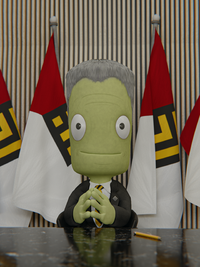
Sarconia is nominally a Democratic Federation. It operates a one-party system. This sole party has no name, but traces its roots to Davedhrien Kerman's political and paramilitary faction from 2066 through to 2115. In the absence of an official moniker it is often referred to as the Sarconian State, or just the State. There is no official constitution.
The country operates under a form of economic statism. Jurisdiction over social affairs is highly devolved to the systems of each province, but control over economic planning, taxation and military affairs is centralised in Aerfel.
Along with Xaoism in Xourao, Sarconia's Davedhrienist ideology leaves it one of the only nations on Kerbin still practicing a system of policies descended from Stihlovism.
Subdivisions
Sarconia contains fifteen provinces and the administrative region of Zeoul.
Foreign Relations
- See Also: the ’Great Vision’
Sarconia, as a committed regional power, adopts an indifferent stance on almost all matters outside of mainland Doren. On the continent however, its foreign policy is largely oriented around advancing the ‘Great Vision’ - Davedhrien Kerman’s goal of a unifying the Dorvic plains under a single controlling state.
To this end the state maintains close ties with Hermia, Pippakistan, and other political entities across the neighbouring steppes and badlands.
Demographics
Languages and Culture
| “ | Sarconian tradition is unique. No other people practice a tradition of vicissitude. | ” |
| —Unknown | ||
The dominant language of Sarconia is Sarconian. There is also a significant Zeouli speaking population, though citizens fluent in both are relatively uncommon. Tavan is also spoken by a minority in some regions.
A large fraction of Sarconia's population is comprised of nomadic tribes. These tribes follow a traditional lifestyle, dwelling in yurts with little technology and no electricity. They are spread across the steppes, migrating with cattle and capal throughout the year. Family and community play a central role in nomadic society, an attitude which has survived into the modern cities of the nation.
The capal has held enormous significance in Sarconian life and culture for thousands of years. In the aftermath of The Shattering, the kerbal population of Sarconia eclipsed the domesticated capal population for the first time in potentially tens of thousands of years - but a century later, they once again outnumbered citizens.
Education
Sarconia’s educational system is partially devolved across the federation, and varies significantly at this level. Since 2118, the state has offered free lodging and schooling to the children of nomadic families on a seasonal basis. This scheme operates schools in cities such as Aerfel and Koyma to prevent pupils falling through the cracks as a result of migrations. This scheme operates concurrently with provincial systems. Illiteracy rates have fluctuated immensely throughout the nation's history, though are currently relatively low at around 3 percent. An extremely high percentage of illiterates are nomads, which complicates the tracking of this statistic.
Religion
Traditional Sarconian culture is tied to its shamanistic system of belief. Historically associated with specific figures within the tribal hierarchy, the worship of spirits and ancestors is now performed by all levels of society. Within Sarconian Shamanism, the island of Arrataxt holds special significance as the place considered closest to the spirit world.
During Sarconia’s time as an Arkadii satellite state this religion was suppressed, but quickly resurged during the Great Decline and has since remained extremely popular. The modern Sarconian state is secular and citizens enjoy religious freedom.
Age
As a very late to industrialise country, most of Sarconia did not begin to seriously advance through the demographic transition model until the early 2100s.
The population of Sarconia have been influenced by several external and internal factors - such as the mass deaths resulting from The Shattering, the developmental ‘offset’ of north to south Sarconia under Aquaria, and the varying economic fortunes of the country in the 22nd century. The nation showed signs of its first true population boom from the 2120s to the 2140s, but the unification of Doren ultimately placed too much of a strain on national resources for this growth period to be sustainable. After the Maryurt War and the collapse of the UDF the resulting economic slump caused a fall in births, but external investment as a result of more open foreign policy (as well as improvements in quality of life and healthcare stemming from social programs in the 2170s) successfully reversed this trend. As of 2200 Sarconia has a relatively young population, and is experiencing a demographic gift owing to almost a century of development and reconstruction.
There has long been a disconnect between birth rates in the nomadic tribes and the urbanised nation, with tribal families generally having more children, though this trend shows signs of slowly disappearing.
Military
The Sarconian Armed Forces are split across three service branches: the Sarconian Air Force, Sarconian Ground Force, and the Sarconian Maritime Force. Each is made up from professional volunteers.
The armed forces seek to enforce Sarconia's status as a regional power in fitting with the nation's stated international aims. As such, their doctrines, training and inventories are constructed with almost no concern for overseas force projection or space power, instead being oriented towards the successful prosecution of land warfare across Doren. Most affected by this approach has been the Maritime Force, which is much smaller in terms of funding and manpower than the other branches. This disregard for the navy has seen Zeoulian shipbuilding as an industry shrink by over 60 percent since 2115.
In addition to these branches, Sarconia has a long history of supporting and utilising private military companies dating to even before its official establishment as a state. Of these groups, the mercenary wing of Aerfel Industries is by far the largest and most notable. While rarely publicly acknowledged, employees of the corporation often operate alongside regular Sarconian forces.
Air Force
- Main Article: Sarconian Air Force
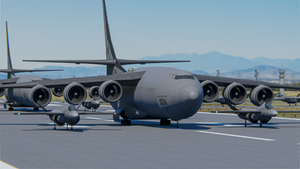
The Sarconian Air Force is the air service branch of the Sarconian Armed Forces.
Ground Force
- Main Article: Sarconian Ground Force
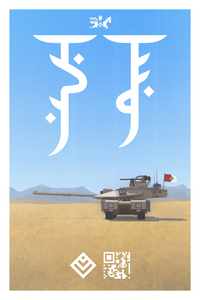
The Sarconian Ground Force is the land service branch of the Sarconian military. It is the largest branch. Since 2115, the Ground Force has participated in the Fall of Aquaria, the Maryurt War and peacekeeping operations during the Zeoulian Rebellion. It operates a highly mechanised force.
Much of the Ground Force's doctrine centres around open conflict in the Dorvic plains, with a strong focus on heavy armour and combined arms operations with the Air Force.
Maritime Force
- Main Article: Sarconian Maritime Force
The Sarconian Maritime Force is the Sarconian Armed Forces' naval service branch. It is significantly smaller than the Air and Ground Forces in terms of funding and personnel.
Economy
- See Also: Corporations of Sarconia
Sarconia operates a centrally planned economy, where the production, distribution, importation and exportation of goods is directed according to the state. Public sector employment accounts for 64 percent of all jobs within the nation.
The Sarconian economy was traditionally built around livestock, though has advanced and diversified significantly since 2115. The northern branch of the Zeuldopine mountains contains sizeable deposits of coal, iron, aluminium and tungsten, the export of which makes up a large share of national industry.
Like many countries, Sarconia possesses a strong domestic manufacturing base with a large presence of advanced and heavy industries in the nation. The Sarconian military industrial complex is relatively independent. Though previously self-reliant as a matter of necessity due to Sarconia's position as a pariah state, after a softening of its global image in the latter half of the 2100s, the country has become a moderate importer and exporter of both arms and other equipment such as jet engines and electronics.
The Aurid, Sarconia's currency, has only been officially adopted in Sarconia and Pippakistan, though it is also widely used across the disorganised territories of Central Doren. Historically subject to periods of very high inflation, especially during the Maryurt War and periods of sanctions, it is considered a weak currency globally. As of 2200 however it has entered a period of relative stability with the growth of the Sarconian economy, more foreign investment into the country, and Sarconian banks accumulating supplies of precious metals and foreign reserve currencies.
Taxation
Taxation is the largest source of revenue for the Sarconian state and a key aspect of economic policy. Several types of tax are levied within the nation. These include:
- Individual Earnings Tax - charged on the personal income of citizens in a bracketed system.
- Enterprise Income Tax - typically set at 20%, extreme degrees of nationalisation and state ownership amongst Sarconia’s corporations make this in many cases simply another means for the state to pay back into itself.
- Reserves Exploitation Tax - levied for the extraction or consumption of resources from state owned land or other property in addition to standard enterprise taxation.
- Customs - duties raised on the import and export of goods. By international standards relatively high, these fees are greatly reduced or waived for Sarconia’s political allies in Doren, such as Hermia and Pippakistan.
Transport
Sarconia's road network is relatively sparse, with few low capacity roads outside of city boundaries. Outside of the Sarconian Sea basin to the north paved roads are even rarer, mostly giving way to giving way to dirt and gravel tracks.
The country possesses a series of domestic airports, though many are operationally shared with the Sarconian Air Force. The largest airport is Davedhrien Kerman International on the outskirts of Aerfel. Regular direct flight connections exist to Hermia, Fegeland, Laveska, and more nations in Doren.
Sarconia’s railway system originated in the period 1947-1984 while the nation was abortively industrialised under Arcadian influence. In the Shattering the aging network sustained enormous damage in almost every key area, rendering it inoperable. Work on repairs, overhauls and new lines did not seriously begin until the early 2120s. The main link to the Arcadian Railway, now connecting to the continental UIF, was never reopened.
Energy and Infrastructure
Sarconia’s national grid is largely hydrate-based. Coal and gas deposits along the banks of the Great Lakes and Sarconian Sea provide 61% of all energy in the nation.
Trade
Sarconia has faced intermittent sanctions for almost its entire modern existence. With this in mind, the country has grown to be minimally reliant on external trade, though since 2160 has been participating more and more in global markets.
Science
Due to its historically poor level of development, Sarconia has made relatively few contributions to science. Prior to 2115, its academic output was essentially zero, though has since become more established and continues to increase.
History
- Main Article: History of Sarconia
Second Continental War and the Shattering
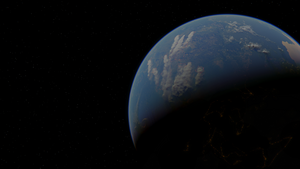
Maryurt War
Dissolution of the United Doren Front
About The Flag
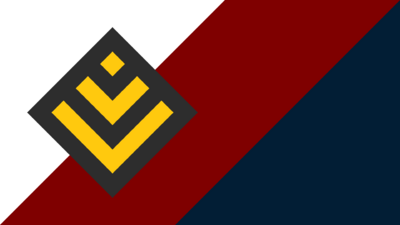
The official flag of Sarconia from 2109 onwards has been the traditional Sarconian diamond on a Dorvic red and white field split vertically down the centre. The symbol is of indeterminate nomadic origin, and is at least centuries old. This design was personally chosen by Davedhrien Kerman to be strongly reminiscent of the Combined Provinces of Doren and promote continental unity.
The legally prescribed aspect ratio of the flag is 16:9. Examples in 3:5 have also been produced and occasionally used for official applications, though this version is not as widespread.
Colour Scheme
| Format | Dorvic Red | White | Grey | Sarconian Yellow |
|---|---|---|---|---|
| RGB | [127,0,0] | [255,255,255] | [45,45,45] | [255,201,14] |
| HEX | #7F0000 | #FFFFFF | #2D2D2D | #FFC90E |
